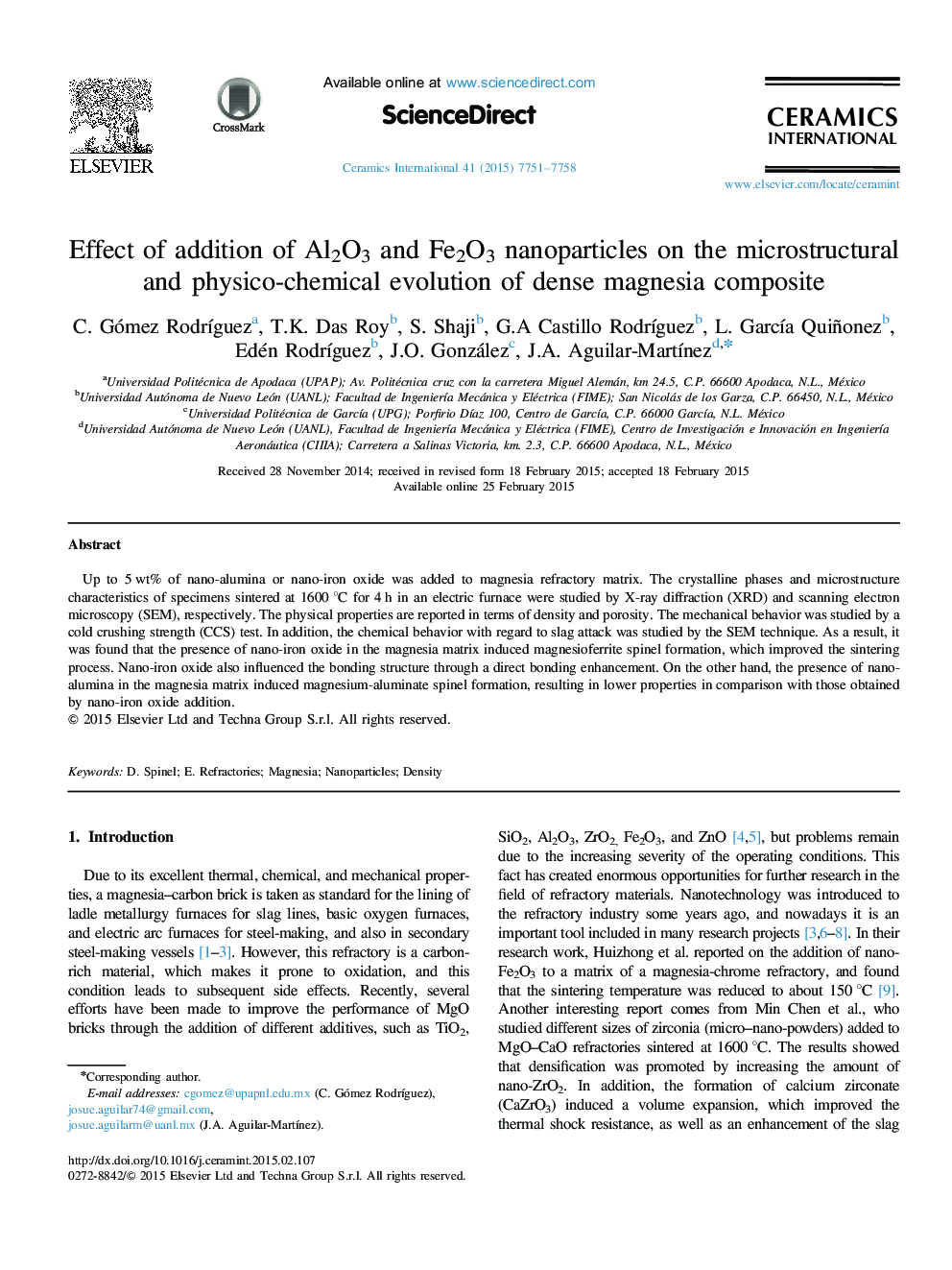| Article ID | Journal | Published Year | Pages | File Type |
|---|---|---|---|---|
| 1459779 | Ceramics International | 2015 | 8 Pages |
Up to 5 wt% of nano-alumina or nano-iron oxide was added to magnesia refractory matrix. The crystalline phases and microstructure characteristics of specimens sintered at 1600 °C for 4 h in an electric furnace were studied by X-ray diffraction (XRD) and scanning electron microscopy (SEM), respectively. The physical properties are reported in terms of density and porosity. The mechanical behavior was studied by a cold crushing strength (CCS) test. In addition, the chemical behavior with regard to slag attack was studied by the SEM technique. As a result, it was found that the presence of nano-iron oxide in the magnesia matrix induced magnesioferrite spinel formation, which improved the sintering process. Nano-iron oxide also influenced the bonding structure through a direct bonding enhancement. On the other hand, the presence of nano-alumina in the magnesia matrix induced magnesium-aluminate spinel formation, resulting in lower properties in comparison with those obtained by nano-iron oxide addition.
